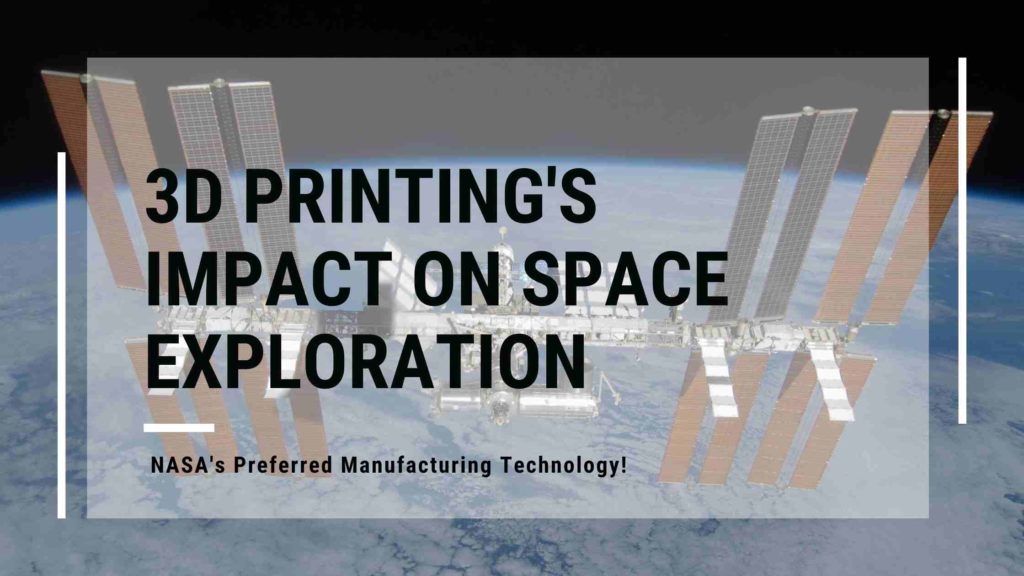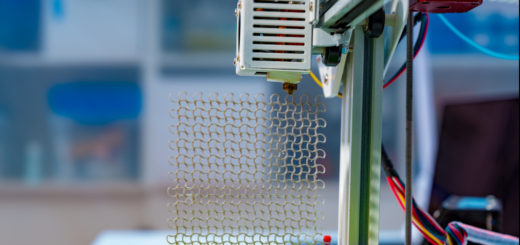NASA’s 3D Printing Revolution in Space: Innovating Beyond Gravity
In the ever-evolving realm of technology, 3D printing, also referred to as additive manufacturing, stands as a testament to human innovation. This groundbreaking process involves crafting three-dimensional objects from digital blueprints, paving the way for a new era of manufacturing. While traditional methods rely on subtracting material from a solid block or moulding it into shape, 3D printing operates by layering material, offering unmatched versatility and creativity.
Transforming Industries, One Layer at a Time
The influence of 3D printing transcends industry boundaries, leaving its indelible mark on manufacturing, healthcare, education, and, intriguingly, space exploration. Each sector harnesses the technology in unique ways, pushing the boundaries of what’s possible.
Manufacturing Marvels: Rapid Prototyping
In the realm of manufacturing, 3D printing has revolutionized rapid prototyping. Engineers and designers can now transform concepts into tangible prototypes with unprecedented speed and precision, accelerating product development cycles and spurring innovation.
Healthcare’s Personal Touch: Patient-Specific Implants
Healthcare embraces 3D printing to create patient-specific implants, enhancing the quality of life for many. Tailored prosthetics and implants, precisely customized for individual patients, exemplify the potential of this technology to improve medical outcomes.
Educating Tomorrow’s Innovators
In education, 3D printing is a transformative tool for hands-on learning. Students gain invaluable insights into design, engineering, and creativity by bringing their ideas to life in a tangible form.
Conquering Cosmic Challenges: 3D Printing in Space Exploration
Space exploration confronts a unique challenge: the constraints of the cosmos. Minimizing payload size and weight is a paramount concern, impacting mission cost, efficiency, reliability, and success. Here, 3D printing emerges as the key to unlocking the full potential of space missions.
NASA’s Pioneering Mission: 3D Printed Electronics
NASA, the United States’ space agency, recently embarked on a groundbreaking mission in April 2023. This mission sought to explore the use of 3D-printed electronic circuits in spacecraft, marking a paradigm shift in space technology.
Crafting Innovation at the Edge of Space
The mission’s highlight was a specially designed rocket, unlike any before it. This rocket carried two sensors, but not as traditional payloads. Instead, NASA employed a 3D printer to craft intricate circuits directly onto the rocket’s surface. The rocket ascended to the edge of space, reaching a staggering altitude of 174 kilometers above sea level. Throughout the journey, the sensors meticulously monitored the rocket’s performance, relaying critical data back to mission control.
Turning Surfaces into Circuitry: 3D Printing’s Potential
The results of this mission were nothing short of spectacular. 3D printing demonstrated its remarkable ability to transform virtually any surface into functional electronics. By replacing traditional circuitry, this innovation significantly reduces the space required for onboard electronics, opening doors to packing more technology into smaller spaces.
Unveiling the Future: Space-Worthy 3D Printed Materials
NASA and other space agencies are presently committed to testing the space-worthiness of 3D-printed materials for future applications. Rigorous assessments aim to determine whether these materials can withstand the harsh conditions of space, including solar radiation, extreme temperatures, and the vacuum of outer space.
The future of 3D printing in spacecraft holds immense promise, poised to revolutionize spacecraft design and construction.
The Era of Autonomous Manufacturing in Orbit
A futuristic vision is fast becoming reality. Made in Space, a US-based company, achieved a remarkable milestone by successfully launching the first 3D printed circuit into space approximately a few years ago. (Source: Made in space)
This pioneering initiative simplifies manufacturing by digitally transmitting designs to space for in-situ 3D printing. As technology advances further, innovative applications await future space missions, including crewed journeys to Mars and beyond.
Building Beyond Earth: Localised 3D Printing
In the quest for deep-space exploration and lunar habitation, 3D printing emerges as a game-changer. By utilizing local materials, 3D printing could construct habitats, reducing the need to transport massive structures from Earth. This innovation promises to reshape the future of space architecture.
Information about the European Space Agency (ESA) study on lunar 3D printing: ESA – European Space Agency
The Sky Is Not the Limit: The Boundless Potential of 3D Printing in Space
In summary, 3D printing manufacturing technology has transcended earthly boundaries, finding its place among the stars. From revolutionising manufacturing and healthcare to fostering innovation in education, this technology has left an indelible mark.
In the cosmos, 3D printing addresses the unique challenge of space constraints, redefining the way we approach space exploration.




